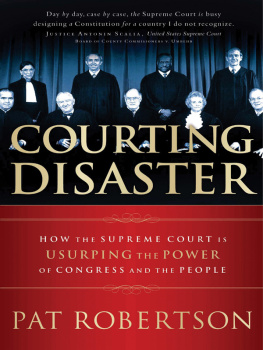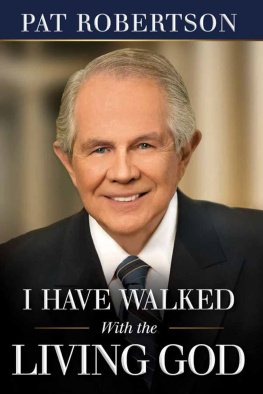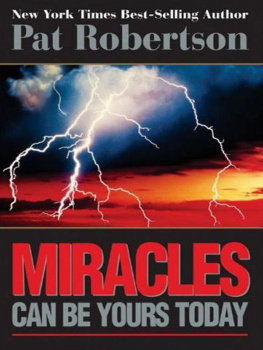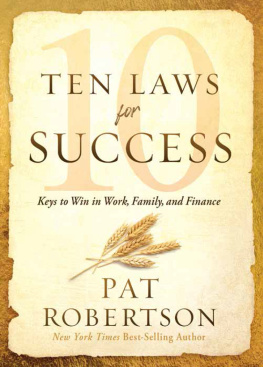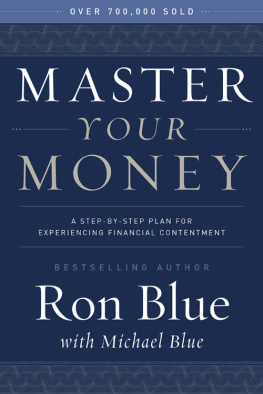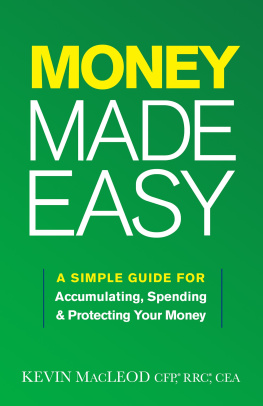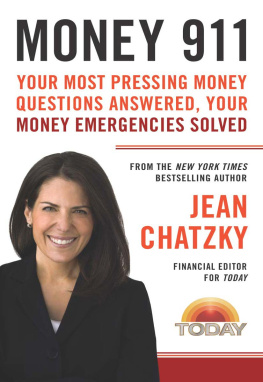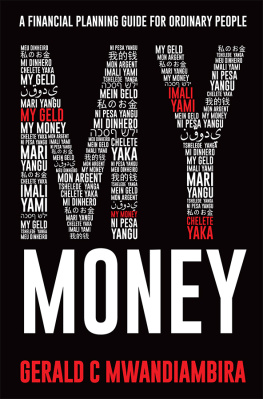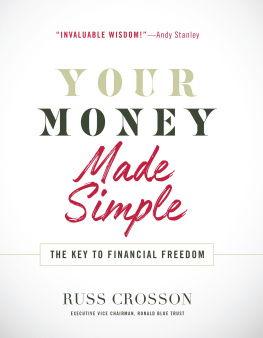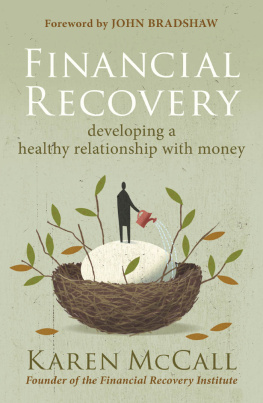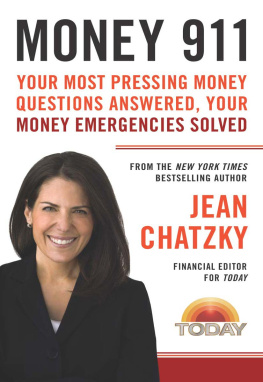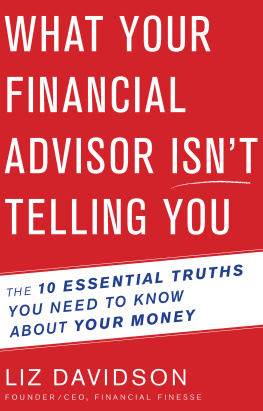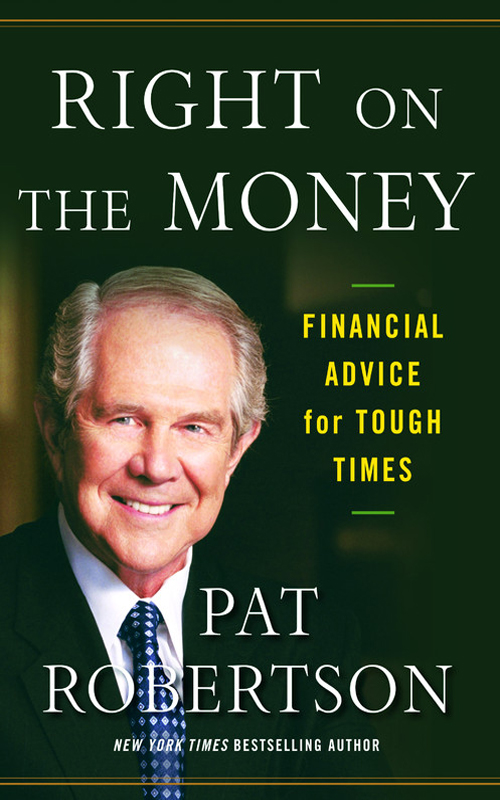The information in this book is as up to date as possible, however it is sold with the understanding that financial information is often subject to new and changing interpretations, government rulings and legislation. The reader should consult with a finance professional regarding specific questions.
Scriptures are taken from the King James Version (KJV).
Scriptures noted NIV are taken from the HOLY BIBLE: NEW INTERNATIONAL VERSION. Copyright 1973, 1978, 1984 by International Bible Society. Used by permission of Zondervan Publishing House. All rights reserved.
Copyright 2009 by Pat Robertson
All rights reserved. Except as permitted under the U.S. Copyright Act of 1976, no part of this publication may be reproduced, distributed, or transmitted in any form or by any means, or stored in a database or retrieval system, without the prior written permission of the publisher.
FaithWords
Hachette Book Group
237 Park Avenue
New York, NY 10017
Visit our website at www.faithwords.com.
First eBook Edition: May 2009
FaithWords is a division of Hachette Book Group, Inc. The FaithWords name and logo are trademarks of Hachette Book Group, Inc.
ISBN: 978-0-446-54958-5
Right on the Money is my nineteenth book, and I must say that my experience with Michelle Rapkin, the Executive Editor of Hachette, has been the most agreeable that I have experienced from any publisher. I am deeply grateful to Michelle for her hard work in bringing this book to fruition, despite personal sorrows in her own life during this project.
I also want to thank my secretary, G.G. Conklin, for her work in typing and organizing the manuscript.
And, in particular, I would like to acknowledge my Vice President, Edie Wasserberg, who has been a great encouragement in the production of television features on finances for my program, The 700 Club.
Beyond this, my deepest thanks and appreciation to Jeff Opdyke whose brilliant analysis of investment philosophy has played a key role in this book, which I hope will prove successful.
The Big Picture
A reporter asked John D. Rockefeller, the founder of Standard Oil and at that time the richest man in the world, how much money was enough.
Rockefeller is reported to have replied, Just a little bit more.
He was right. Wealth cannot satisfy. Therefore, to those in the money game there is always a drive for more a little bit more then a little bit more. We constantly torment ourselves in a never-ending quest for that which money and possessions can never provideinner peace, fulfillment, happiness.
Some years ago, I was conversing with a prominent real estate agent. He said almost wistfully, If I could only have one million dollars, my problems would be over.
You poor fool, I thought to myself, if you only knew how ridiculous that statement is.
First, when finance is measured in billions and trillions, a million is really not that much money in this day. Second, it cannot possibly bring lasting satisfaction. Third, it introduces a level of complexity into an average persons life for which he or she is not truly ready. Fourth, it merely replaces a longing for money with the fear of losing it. Fifth, it induces greed.
Greedthe Lust of Wanting It Now
Look at the financial chaos that human greed has produced. It is perfectly natural and proper for a family to desire adequate shelter, and then, in time, to want to move up to more spacious and pleasant surroundingsall in the appropriate time when income and investments make it possible for a growing family to enjoy the home of their dreams. That is not greed. Greed is like lust. One definition of lust is wanting it now.
The Recent Big Picture
During the past decade, politicians wanted votes from citizens who were provided with ridiculous opportunities for home ownership. Widespread greed took over. Home builders wanted generous profits from massive housing developments. Mortgage brokers carved for themselves a lucrative niche from the housing bonanza. Then the Wall Street investment houses joined in to create and then to inflate the value of housing-backed securities.
At the heart of the rapidly expanding bubble were average Americans who succumbed to greed and bought houses they could not possibly afford, financed by variable-rate mortgages offered by unscrupulous brokers who either required no valid supporting documentation or supported an application with outright lies.
This cornucopia was too much for the Wall Street investment houses to resist. They took the government-blessed mortgages, then packaged them together as support for billions of dollars worth of high-yield paper called collateralized debt obligations. These questionable securities were submitted to the major ratings agencies, which promptly declared them triple Asuitable for investment by municipalities, banks, trust funds, and school endowments. Then, like a terrible plague, billions of these toxic things were sold (at a healthy profit) all over the world.
The day of reckoning came in 2007 when millions of new homeowners (and speculators) realized that they could not possibly afford the monthly interest payments that were due on their home loans after the low-cost teaser rates on their mortgages were reset to prevailing market rates.
There quickly followed a wave of foreclosures, abandoned houses, and bankruptcies. Suddenly it was clear that the emperor had no clothes. Venerable banks and investment houses that were gorged with collateralized debt obligations had no concept what these things were now worth. Were they to be valued twenty cents on the dollar, thirty cents, fifty cents, or zero? No one knew precisely the value of billions of dollars worth of mortgage-backed securities because no market existed on which they traded.
Soon credit markets seized up because banks could no longer prove their solvency. Then the Securities and Exchange Commission exacerbated the problem by insisting on so-called mark to market accounting. This meant that financial institutions were being forced by arbitrary accounting rules to raise billions of dollars in fresh capital or be declared insolvent.
The stock markets around the world dropped precipitouslybusinesses were unable to find credit. A potentially devastating depression was looming on the horizon.
The government acted swiftly. Ben Bernanke, the chairman of the Federal Reserve Board and a leading expert on the 1929 Depression, realized that this devastating period of our history was brought on after a stock market crash when the government raised taxes, adopted protectionist tariffs, and restricted money. He is known as Helicopter Ben for his statement that in order to forestall a future depression, the government will throw money out of helicopters.
Throw money they dida $700 billion Troubled Asset Relief Plan$150 billion to insurance giant American International Group (AIG); $500 billion backing for commercial paper; $29 billion to guarantee the debts of Bear Stearns; $20 billion each to mortgage giants Fannie Mae and Freddie Mac; a $300 billion backstop for Citigroup; opening the Fed discount window for borrowings by investment banks; lowering the Fed funds rate (the rate at which banks lend to each other) to 1 percent. According to Bloomberg, the sums put out in various rescue efforts total, as of this writing, an incredible $7.7 trillion. Because of this the larger national monetary base has grown an astounding 38 percent in one year, unprecedented in our history.
Why the Authorities Are Taking Such Drastic Action
A much more ominous cloud is looming ahead. During the heady days of the real estate bubble, lenders attempted to protect themselves with insurance policies against defaults. This practice quickly morphed into a bucket shop operation in which insurers were writing policies for those who had no financial interest in the transactions. Imagine that you or your bank obtains an insurance policy against a default on your mortgage. Now imagine that each of the neighbors on your block obtains a similar policy on your mortgage. These neighbors have no financial interest in your house, but are simply gambling that you will or wont default on your mortgage or that your house will or will not burn down. The name given to the exotic variations of this theme is


